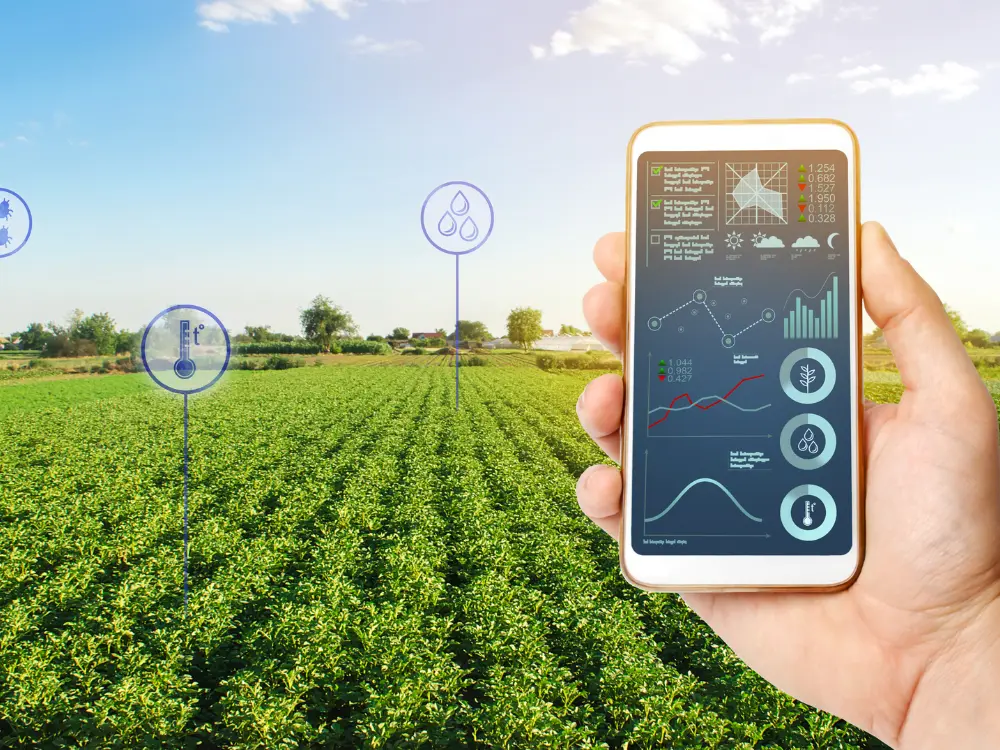In the era of digital transformation, “big data” has become more than just a buzzword; it is a critical tool reshaping industries across the globe. Agriculture, traditionally seen as a labor-intensive and low-tech sector, is now experiencing a revolution driven by data. Big data is helping farmers make better decisions, optimize resource use, and increase productivity. In a country like India, where agriculture remains the backbone of the economy, the use of big data in farm management is proving to be a game-changer.
What is Big Data in Agriculture?
Big data in agriculture refers to the collection, processing, and analysis of vast amounts of information related to farming activities. This data can come from various sources, including weather stations, satellite imagery, sensors in the field, market prices, and even social media. The goal is to use this data to gain insights that can help farmers make informed decisions, improve efficiency, and ultimately increase yields and profits.
Big data is characterized by the “three Vs”: Volume, Velocity, and Variety. It involves massive amounts of data (Volume), collected in real-time (Velocity), from a wide range of sources (Variety). Analyzing this data can uncover patterns and trends that are not immediately obvious but can significantly impact farming outcomes.
Key Applications of Big Data in Farm Management
1. Weather Forecasting and Climate Analysis
Weather is one of the most critical factors in farming. Accurate weather forecasts can help farmers plan their activities, such as planting, irrigation, and harvesting, to avoid adverse conditions and optimize crop growth. Big data analytics processes vast amounts of weather data, including historical weather patterns, to provide more accurate and localized forecasts.
By analyzing climate data over time, big data can also help farmers understand long-term trends, such as shifts in rainfall patterns or temperature changes, which can influence crop selection and farming practices. This information is particularly valuable in a country like India, where climate variability can have a significant impact on agricultural productivity.
Example in India: In Rajasthan, farmers are using weather forecasting tools powered by big data to decide the best time to sow seeds, leading to better crop establishment and reduced risks of crop failure.
2. Precision Agriculture and Resource Optimization
Precision agriculture is a farming approach that uses data to optimize the application of inputs like water, fertilizers, and pesticides. Big data plays a crucial role in this by analyzing information from soil sensors, satellite imagery, and other sources to provide precise recommendations.
For example, data from soil moisture sensors can be analyzed to determine the exact amount of water needed in different parts of a field. Similarly, data on soil nutrient levels can guide the application of fertilizers, ensuring that each crop receives the right amount of nutrients without overuse. This targeted approach not only improves yields but also reduces waste and minimizes the environmental impact of farming.
Example in India: In Punjab, big data is being used to optimize water usage in wheat and rice fields, where precise irrigation schedules based on real-time soil moisture data are helping farmers conserve water and reduce costs.
3. Crop Health Monitoring and Disease Prediction
Big data is revolutionizing the way farmers monitor crop health and manage diseases. By analyzing data from drones, satellite images, and field sensors, big data platforms can detect early signs of stress in crops, such as discoloration or irregular growth patterns, which may indicate disease or pest infestations.
Machine learning algorithms can then predict the spread of diseases based on historical data and current conditions, allowing farmers to take preventive measures before the problem escalates. This proactive approach not only protects crops but also reduces the need for chemical treatments, promoting more sustainable farming practices.
Example in India: In Maharashtra, grape farmers are using big data analytics to monitor crop health and predict the risk of disease outbreaks, leading to timely interventions and improved crop quality.
4. Market Analysis and Price Forecasting
Big data is also helping farmers navigate the complexities of agricultural markets. By analyzing data on market trends, demand, and supply, big data platforms can provide insights into price movements and predict the best times to sell produce.
This information empowers farmers to make better marketing decisions, such as when to harvest, store, or sell their crops to maximize profits. Additionally, big data can help farmers identify new market opportunities and understand consumer preferences, enabling them to diversify their crops and increase their income.
Example in India: In Karnataka, farmers are using big data platforms to track market prices for crops like tomatoes and onions, allowing them to time their sales to get the best possible prices.
5. Supply Chain Management
The agricultural supply chain is complex, involving multiple stages from farm to fork. Big data is streamlining this process by providing real-time information on everything from inventory levels to transportation logistics. This helps farmers ensure that their produce reaches the market in the best possible condition and reduces post-harvest losses.
By analyzing data from across the supply chain, big data can also identify inefficiencies and suggest improvements, such as optimizing routes for transportation or improving storage conditions. This leads to a more efficient and cost-effective supply chain, benefiting both farmers and consumers.
Example in India: The National Agriculture Market (eNAM) platform in India is using big data to connect farmers with buyers, providing real-time information on market demand and helping to reduce supply chain bottlenecks.
Benefits of Using Big Data in Agriculture
1. Improved Decision-Making
Big data provides farmers with the information they need to make better decisions at every stage of the farming process. From choosing the right crops to determining the optimal time for harvesting, data-driven insights lead to more informed and successful farming practices.
2. Increased Efficiency
By optimizing the use of resources like water, fertilizers, and pesticides, big data helps farmers increase their efficiency. This not only reduces costs but also minimizes the environmental impact of farming, promoting sustainability.
3. Higher Yields and Profits
The use of big data leads to healthier crops, higher yields, and better-quality produce. This, in turn, results in increased profits for farmers, helping them improve their livelihoods and invest in further innovations.
4. Risk Mitigation
Big data helps farmers anticipate and mitigate risks, such as weather-related crop failures or market volatility. By providing early warnings and predictive insights, big data reduces uncertainty and helps farmers plan for the future.
Challenges and the Way Forward
While big data offers significant benefits for farm management, its adoption in India is not without challenges. These include limited access to technology and digital infrastructure, especially in rural areas, as well as the need for training and education on how to use big data effectively.
To overcome these challenges, government initiatives, partnerships with tech companies, and investment in rural infrastructure are essential. Additionally, efforts to raise awareness and provide training for farmers on the benefits of big data will be crucial in driving adoption.
Conclusion
Big data is transforming agriculture in India, offering farmers new tools to manage their farms more effectively, increase productivity, and improve their livelihoods. By leveraging data from a wide range of sources, farmers can make more informed decisions, optimize resource use, and mitigate risks. As more farmers embrace big data, the future of farming in India looks brighter, with the potential to meet the growing demand for food in a sustainable and efficient way.

